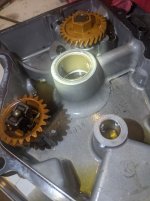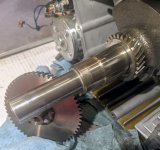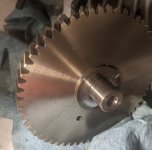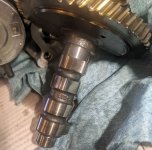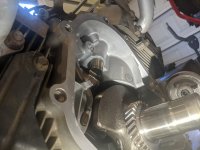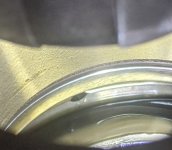Put it this way
That short block is $ 800
A single con rod is $ 50
There are 2 oversizes available do you should be able to run that engine for the next 50 years
Bugger the top crank or cam journals and the engine is toast .
Pulling the sump off to check will cost nothing but a lower oil seal & sump gasket .
Only you know what sort of money you have availible
I am always one for finding out the problem first then working out what you are going to do
If for instance all that has happened is the seal was driven in too far then a new seal might be the fix or a new sump cover.
Kohler have their service manuals on line
However the last time I tried to download one I was blocked but I did get one from
OPE .
So download your service manual, flip through it and see if you are comfortable with what is required.

